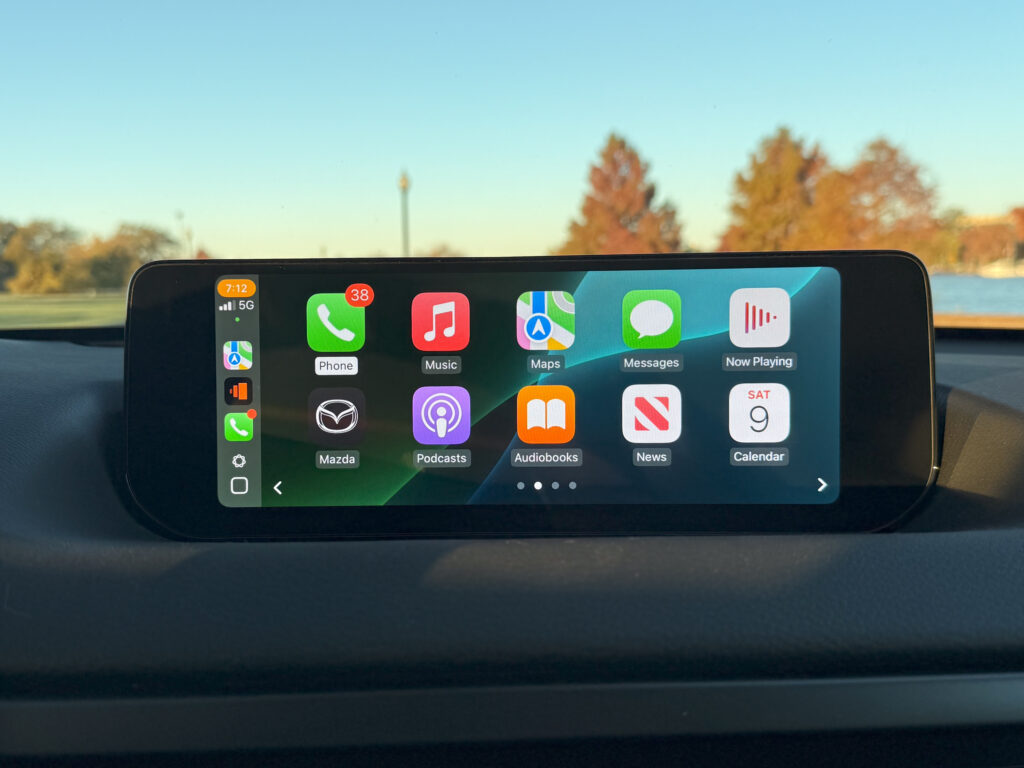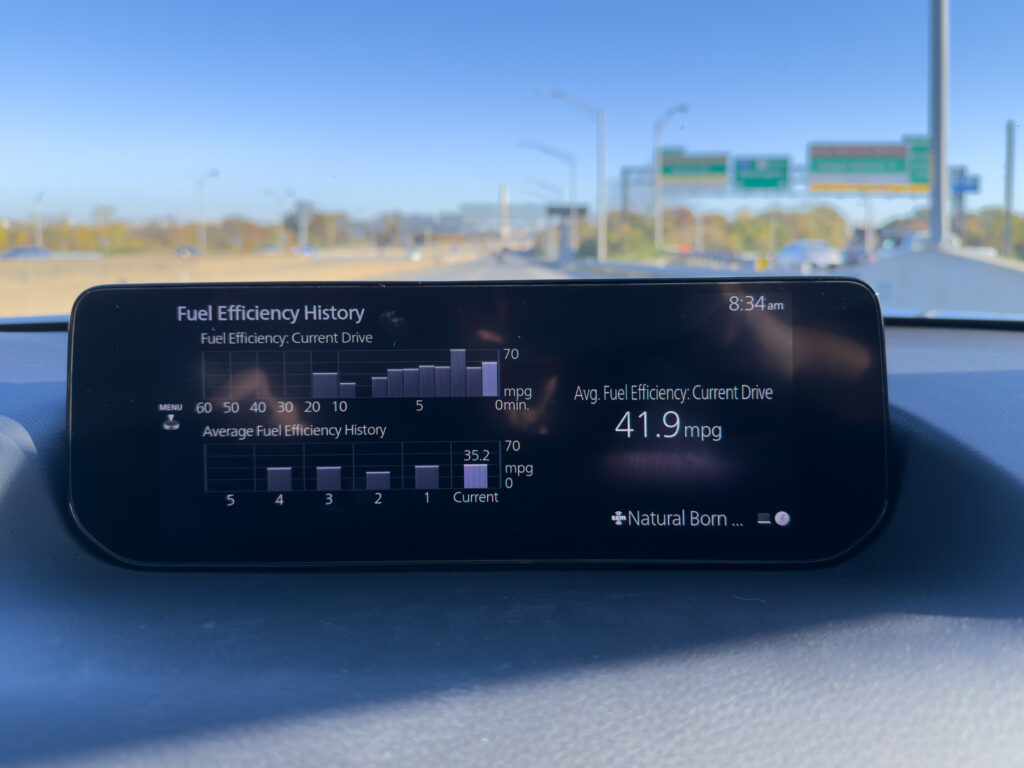The CX-50 Hybrid is also quite well equipped in its base Preferred trim. Opting for the $37,400 Premium trim adds a panorami powered moonroof, some small styling tweaks, leather seats, and a better sound system, including satellite radio. Our test CX-50 Hybrid was the $40,050 Premium Plus, which adds powered folding side mirrors, 19-inch wheels, ventilated front seats, and a rather crisp full-color heads-up display that not only shows turn-by-turn directions from Apple Maps in CarPlay or Google Maps in Android Auto. It also works well even with polarized sunglasses.
It’s possible to exceed the EPA mileage on short trips in the city.
Jonathan Gitlin
The back seat might not be quite as roomy as some electric SUVs we’ve sampled recently, but it’s not cramped in the back, even with the traction battery taking up room underneath. And with the moonroof shade retracted, there’s plenty of natural light. The cargo area is pleasantly roomy, with 29.2 cubic feet (827 L) with the rear seats in use, expanding to 56.3 cubic feet (1,594 L) with the rear row folded flat.
Sadly, the ride is not as refined as the interior. Like the steering, Mazda says that all CX-50s have had recalibrated dampers from the second half of this year, but at 4,008 lbs (1,818 kg) the Hybrid is the heaviest CX-50, and you feel every bump and bounce along the way.
Mazda says that in 2025 it expects to build about 40,000 CX-50 Hybrids at it the joint factory it operates with Toyota in Huntsville, Alabama, and while a base CX-50 Hybrid is a little more expensive than the RAV4 alternative, the extra ~$2,000 goes a long way in terms of a nicer environment to surround yourself with while commuting to work or doing a grocery run. The vastly improved fuel efficiency means this is a Mazda I don’t mind recommending, but I do wish the company could bring back the jinba ittai.






















+ There are no comments
Add yours